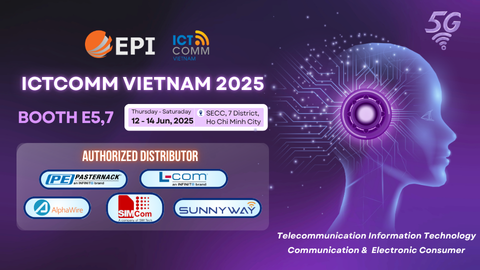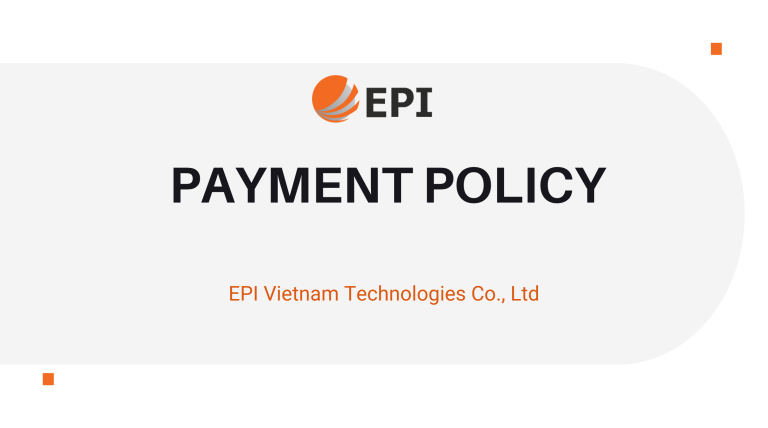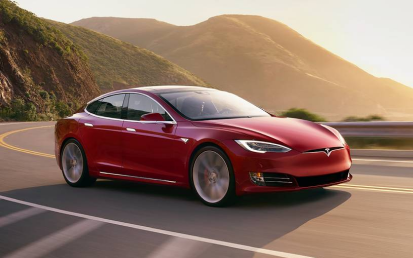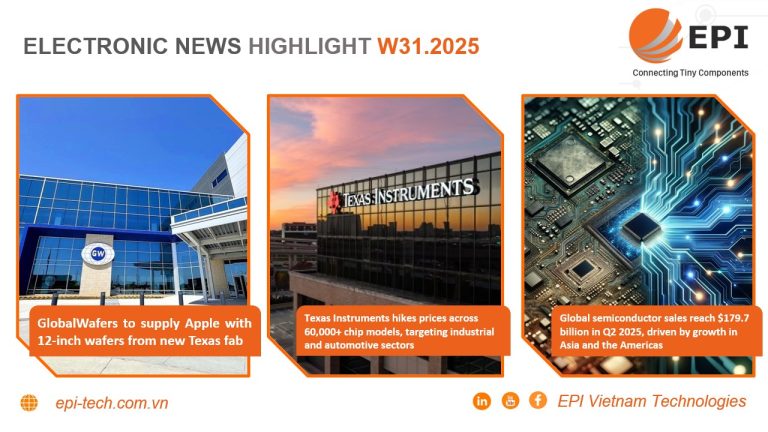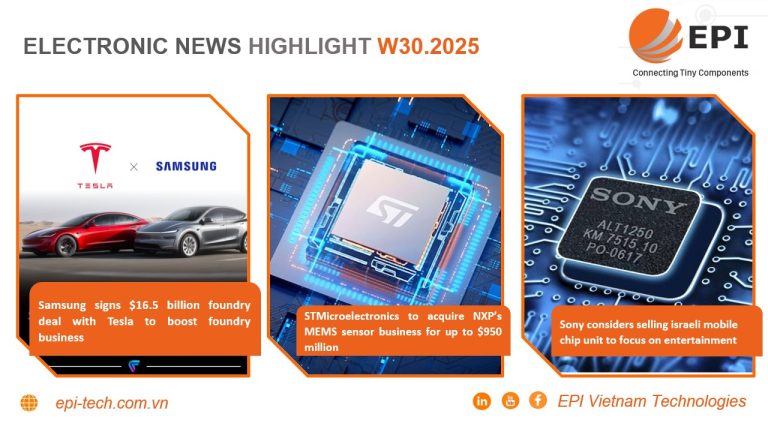ELECTRONIC NEWS HIGHLIGHT W17.2025
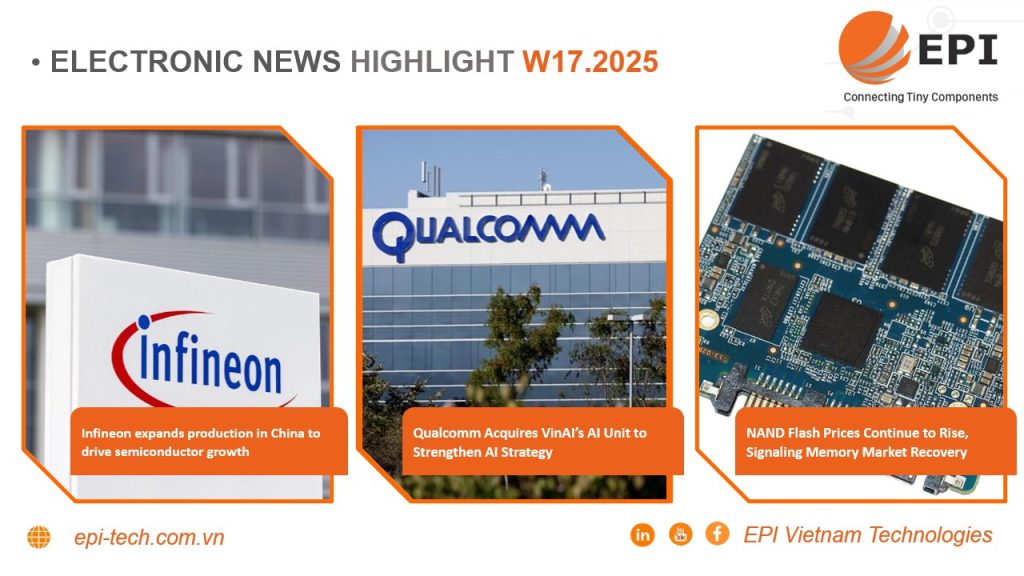
1. Infineon expands production in China to drive semiconductor growth
Infineon’s Wuxi plant has reached a major milestone, marking 30 years of operations in China. As Infineon’s largest IGBT manufacturing facility globally, the Wuxi facility plays a key role in driving the company’s localization strategy, contributing to the growing demand for power semiconductors in the automotive, renewable energy, industrial and consumer electronics sectors.
Infineon has been actively expanding its local manufacturing capabilities to enhance supply chain resilience and accelerate innovation. “As Infineon continues to optimize its global manufacturing footprint, our Wuxi site will play a key role in supporting this transformation,” said Yongxin Fan, Senior Vice President and General Manager of Infineon Wuxi. “By leveraging our expertise and working closely with local partners, we aim to drive efficiency, flexibility and technological advancement.”
Expanding localization and strengthening the supply chain, the Wuxi Plant has continuously expanded its product portfolio and optimized its production processes to meet the needs of domestic and international markets. By building close cooperation with Chinese suppliers, Infineon has enhanced the stability of its supply chain, ensuring smooth and efficient product delivery worldwide.
Promoting smart manufacturing and sustainability, as a leading smart manufacturing base, Infineon Wuxi has implemented advanced digitalization and automation strategies to improve production efficiency and precision. The plant has set industry standards with a strict quality control system, achieving an extremely low defect rate of only 2.9 per billion products.
In addition to technological advancements, Infineon is committed to sustainability. The Wuxi site aims to achieve 100% renewable electricity by 2025 and has integrated resource recycling initiatives to reduce carbon emissions. These efforts fit into Infineon’s broader global mission to develop greener, more energy-efficient semiconductor solutions.
The upcoming opening of Infineon Wuxi’s new building further reflects the company’s commitment to long-term growth in the region. Going forward, the site will continue to enhance its smart and low-carbon manufacturing capabilities, positioning itself as a benchmark for efficiency, quality and sustainability. In doing so, Infineon Wuxi aims to create significant value for its global customers and contribute to the sustainable development of the semiconductor industry.
Xem thêm: Infineon expands production in China to drive semiconductor growth
2. Qualcomm Acquires VinAI’s AI Unit to Strengthen AI Strategy
Qualcomm announced on March 31 that it has acquired the AI division of Vietnam-based AI research firm VinAI. Financial terms of the deal were not disclosed. The move underscores Qualcomm’s continued expansion into AI technologies, enhancing its capabilities in smart devices, automotive applications, and edge computing.
Founded in 2019 by former DeepMind research scientist Hung Bui, VinAI specializes in generative AI, including computer vision algorithms and language models. Backed by Vietnamese conglomerate Vingroup, the company primarily develops AI-powered automotive solutions such as in-cabin monitoring, safety systems, and smart parking technology, and is also involved in cutting-edge AI research.
“This acquisition highlights our strong commitment to AI research and positions Qualcomm at the forefront of the next wave of AI innovation,” said Jilei Hou, senior vice president of engineering at Qualcomm. “By integrating VinAI’s expertise and talent, we will further enhance our AI capabilities and deliver cutting-edge solutions to a wide range of industries and consumers around the world.”
In a 2023 interview with Forbes, Bui revealed that VinAI operates offices in Hanoi, the United States, and Australia, with a workforce of about 200 employees. After the acquisition, he will join Qualcomm and contribute to the company’s AI advancements in smartphones, PCs, software, and automotive chips. “Our team’s expertise in generative AI and machine learning will accelerate the development of innovative AI solutions that reshape the way people live and work,” Bui said.
This is Qualcomm’s second AI-related acquisition in 2024. Earlier in March, the company acquired German AI and Internet of Things (IoT) company Edge Impulse to bolster its edge AI capabilities. Qualcomm CEO Cristiano Amon recently highlighted edge AI as a key growth driver for the company.
Xem thêm: Qualcomm Acquires VinAI’s AI Unit to Strengthen AI Strategy
3. NAND Flash Prices Continue to Rise, Signaling Memory Market Recovery
NAND flash prices have risen for three consecutive months, bolstering the memory market recovery outlook. Driven by growing demand for artificial intelligence (AI) applications, the expanding information technology (IT) sector is boosting expectations for major semiconductor makers such as Samsung Electronics and SK Hynix.
According to a report from DRAMeXchange on April 1, the average fixed transaction price of general-purpose NAND flash (128Gb 16Gx8 MLC) increased to $2.51, up 9.61% month-on-month. This is the largest one-month increase since March 2017 (13.87%). NAND prices have been on an upward trend since recovering in January 2024, after four consecutive months of decline from September to December 2023. Meanwhile, the fixed transaction price of DDR4 DRAM for PCs has remained stable at $1.35 since November 2023.
The price recovery is mainly driven by supply-side adjustments. Global memory chipmakers have reduced large-capacity NAND production during the economic downturn, gradually restoring the supply-demand balance. TrendForce expects enterprise SSD demand to recover in the second quarter of 2024 after a period of adjustment, driven by the growth of the AI industry. China’s DeepSeek launch is also expected to accelerate AI adoption and data center expansion, further boosting enterprise SSD demand.
Growing consumer demand for AI-enabled mobile devices is another factor supporting the memory market. Gartner forecasts global spending on generative AI to reach $644 billion by 2024, up 76.4% year-over-year, with smartphones and AI PCs accounting for 80% of total spending.
Xem thêm: NAND Flash Prices Continue to Rise, Signaling Memory Market Recovery
#ASEAN #AsiaPacific #FarEast #distributor #Global #electronicdistributor #PCBA



 English
English  Tiếng Việt
Tiếng Việt 






